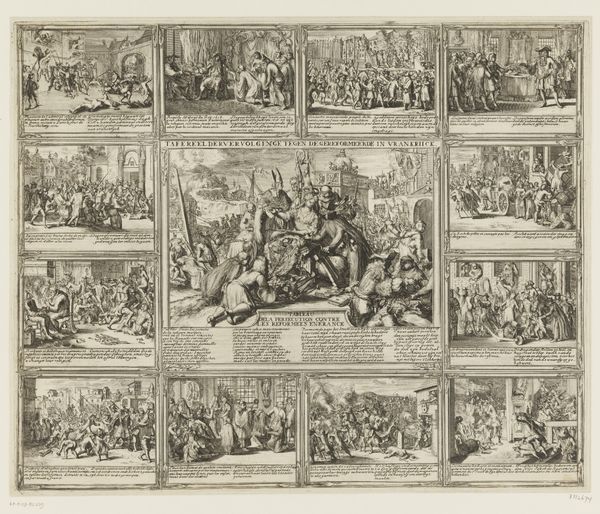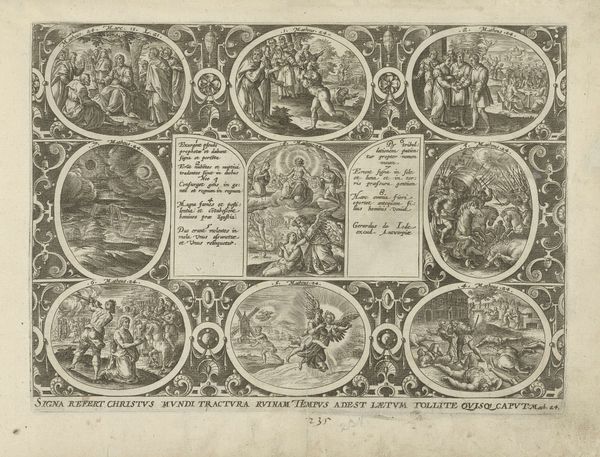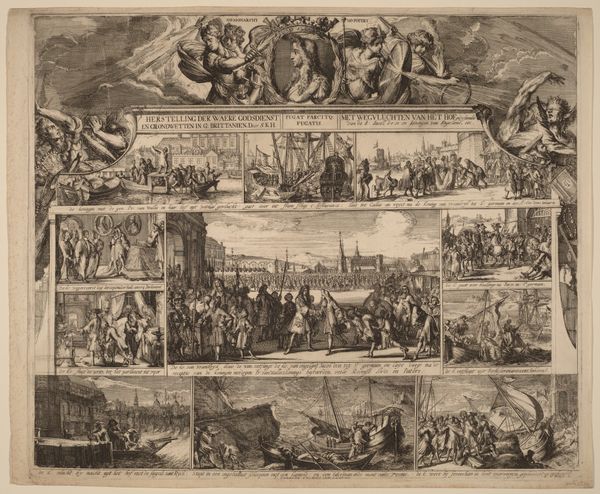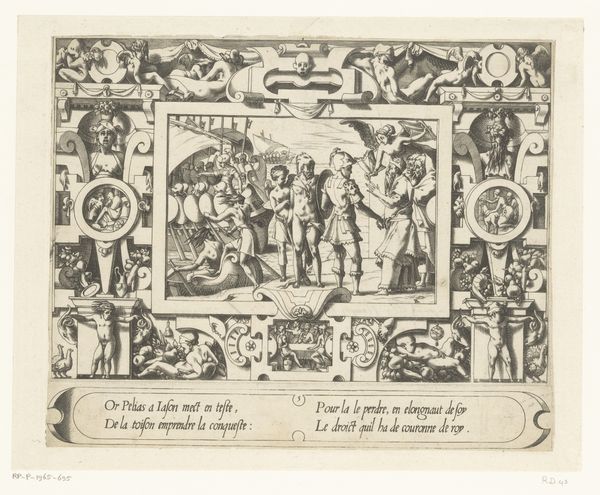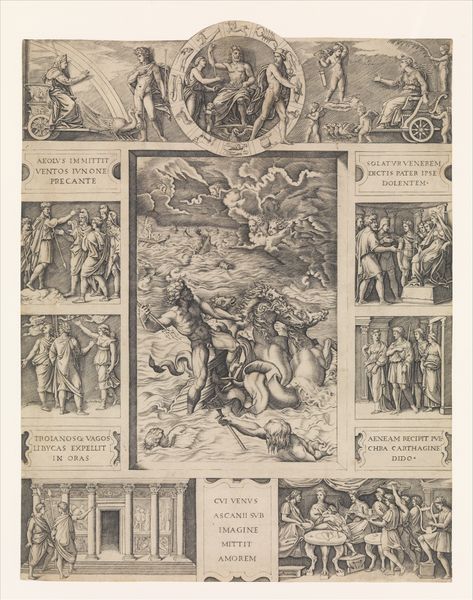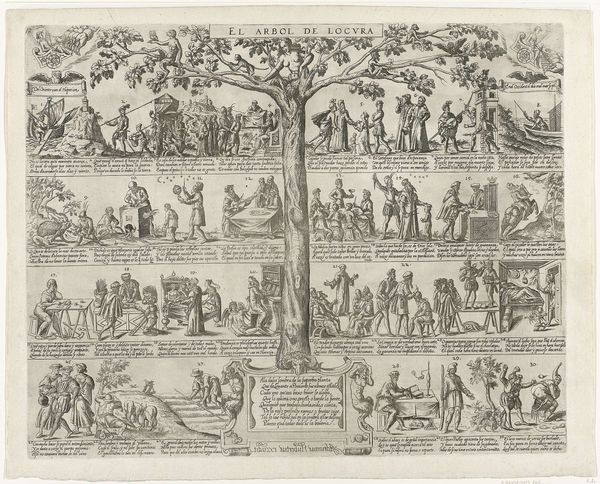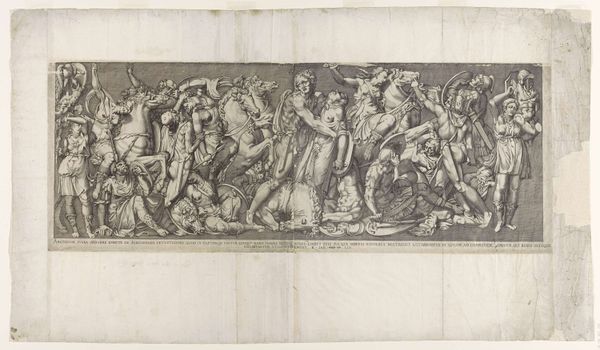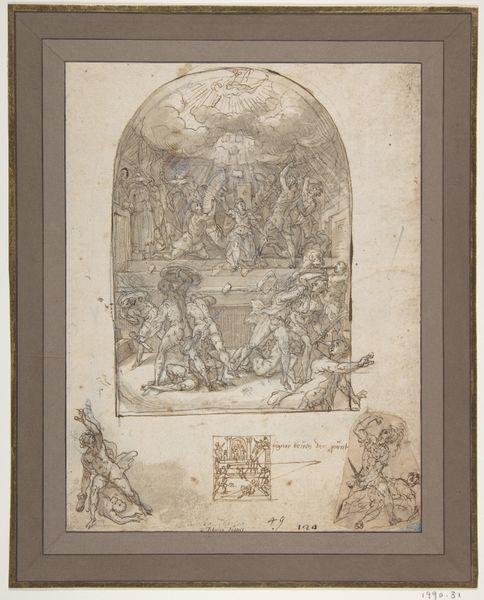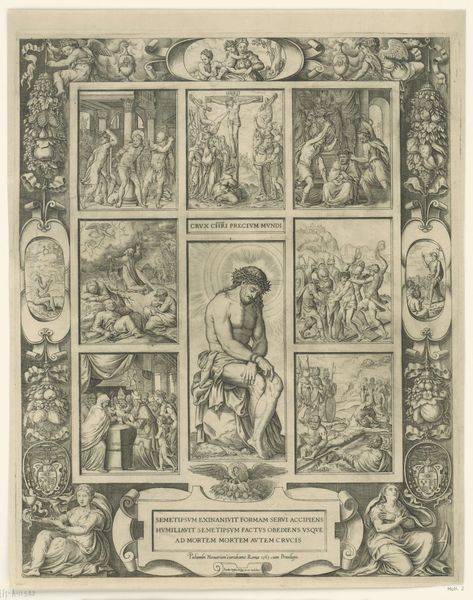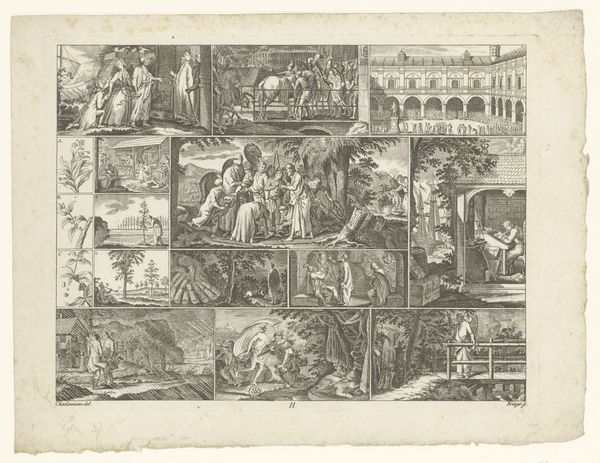
print, engraving
#
comic strip sketch
#
medieval
#
narrative-art
# print
#
old engraving style
#
sketch book
#
mannerism
#
personal sketchbook
#
sketchwork
#
geometric
#
pen-ink sketch
#
pen work
#
sketchbook drawing
#
history-painting
#
storyboard and sketchbook work
#
sketchbook art
#
engraving
Dimensions: height 371 mm, width 508 mm
Copyright: Rijks Museum: Open Domain
Curator: Étienne Dupérac’s engraving, “Verkeerde wereld,” which translates to “World Upside Down,” dates from around 1560 and offers quite a detailed symbolic tableau. What are your initial thoughts? Editor: It’s incredibly busy. My eye jumps all over, trying to decipher each scene. The overriding mood seems chaotic, almost absurd, like a medieval cartoon gone wild. Curator: Indeed. The artist, with roots in mannerism, packs numerous scenes into this print, presenting various societal inversions. It’s a complex collection of topsy-turvy situations meant to reveal moral decay, and these inversions are rooted in folk traditions as well as philosophical reflections. Do you see a theme emerging for you as you continue looking at it? Editor: The disruptions of power. I see women dominating men, animals ruling humans—a subversion of the so-called natural order, very telling of power dynamics during this period. Perhaps questioning established social structures? Curator: Absolutely, and more so a pointed criticism. The topsy-turvy world served as a powerful emblem of disorder, a commentary on a society seen to be slipping into moral chaos. Take the animal imagery, for example; by placing animals in positions of authority or carrying out human activities, the artist draws upon a long cultural tradition of using bestiality to highlight moral failings, connecting viewers to pre-existing folklore. Editor: So it acts as a warning against veering from established hierarchies? What is communicated to the common viewer when things they understand are challenged or inverted? Is that an emotional wake-up? A disturbance? Curator: Exactly, these recognizable disruptions have significant emotional impact as their shock creates a very lasting memory. By flipping those accepted icons of hierarchy, the artist offers us an active tool of both societal critique, moral teaching and memory retention through impactful imagery. Editor: Understanding that this form of narrative-art provided potent means of relaying historical tensions gives a lot more significance to the piece for a modern-day audience. Thank you, those details brought new insight! Curator: My pleasure; exploring the continuities and enduring power of these symbols brings such life to our perception.
Comments
No comments
Be the first to comment and join the conversation on the ultimate creative platform.
